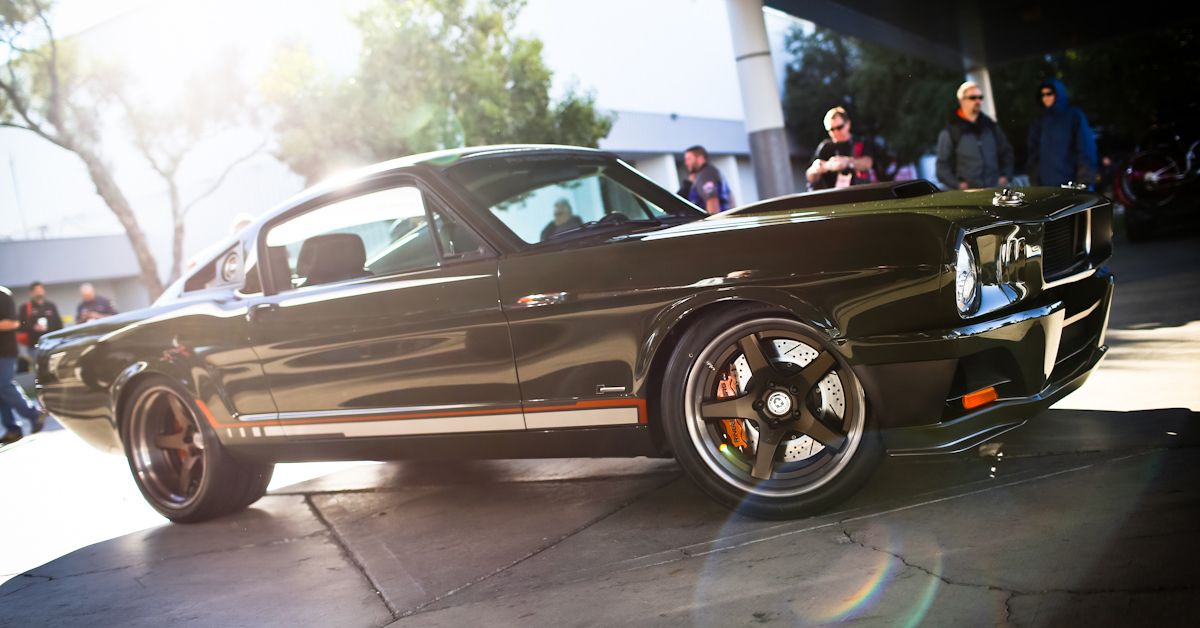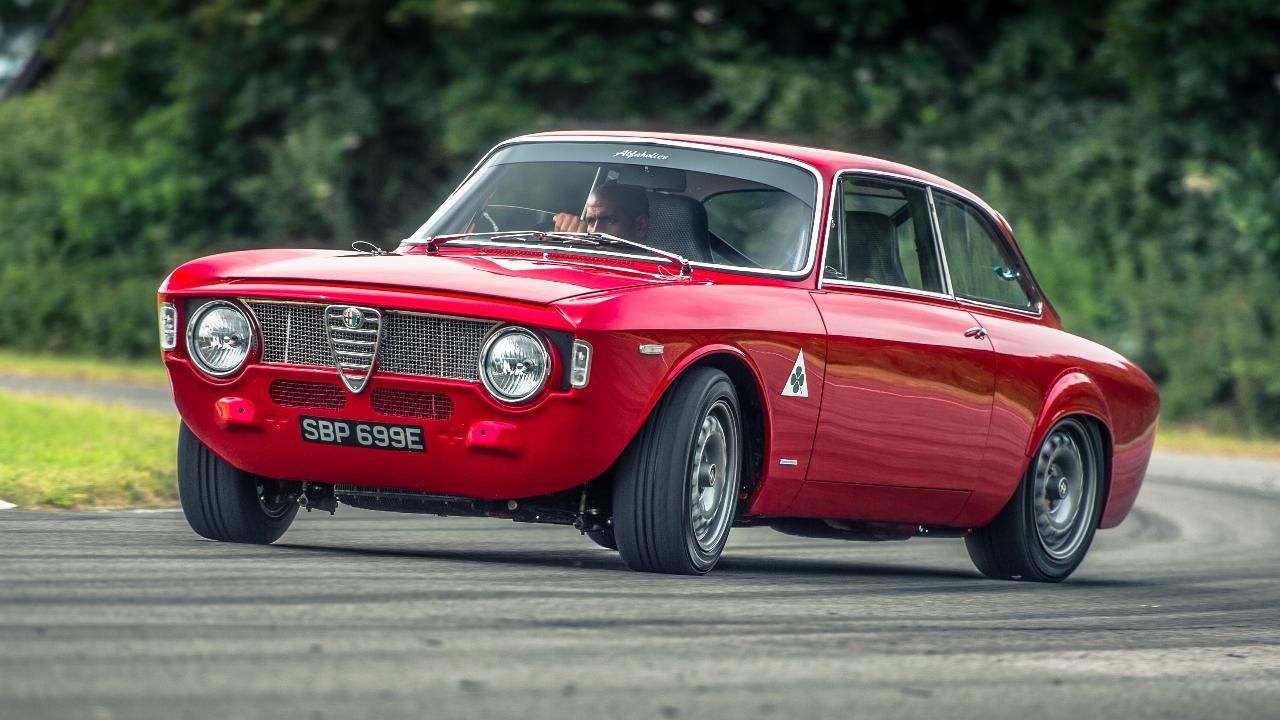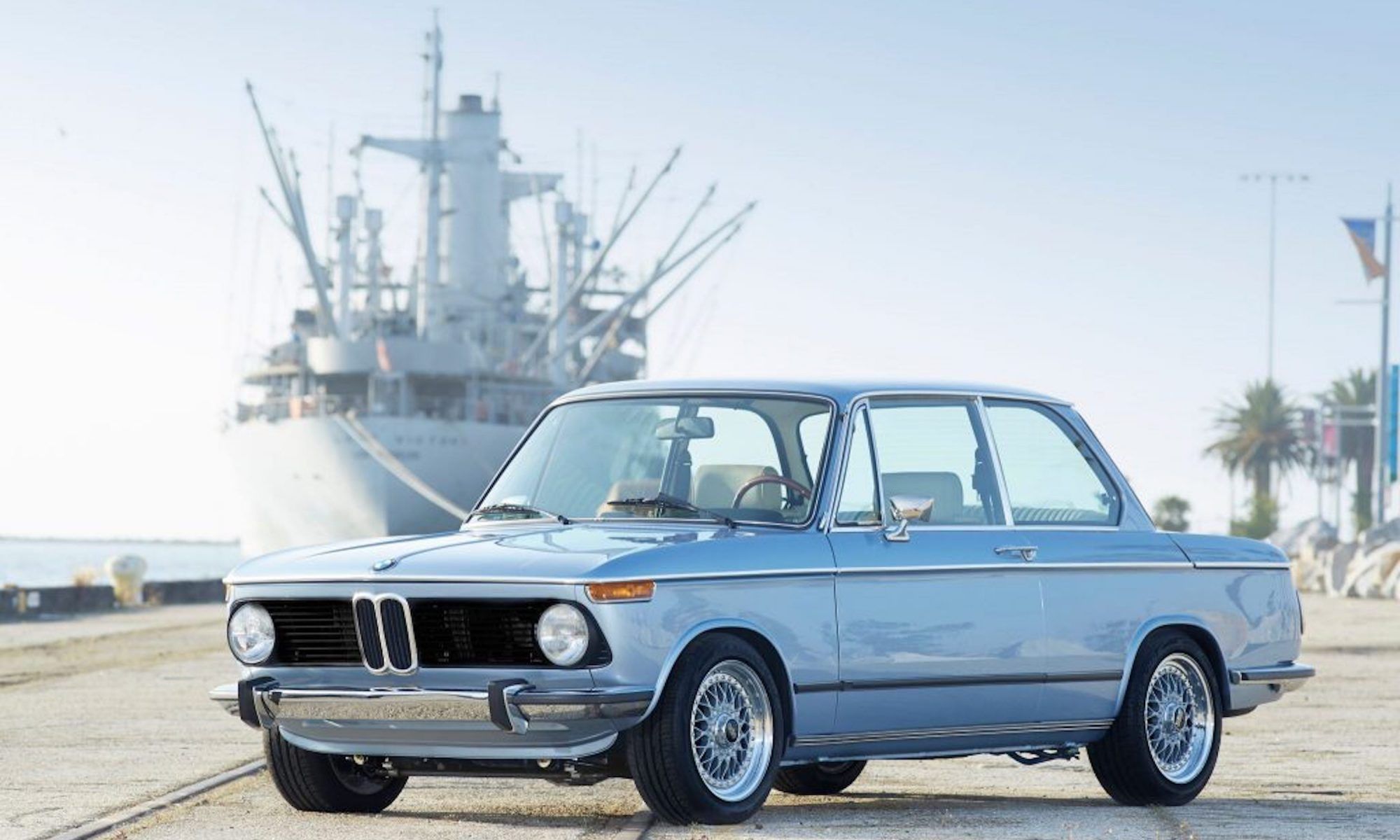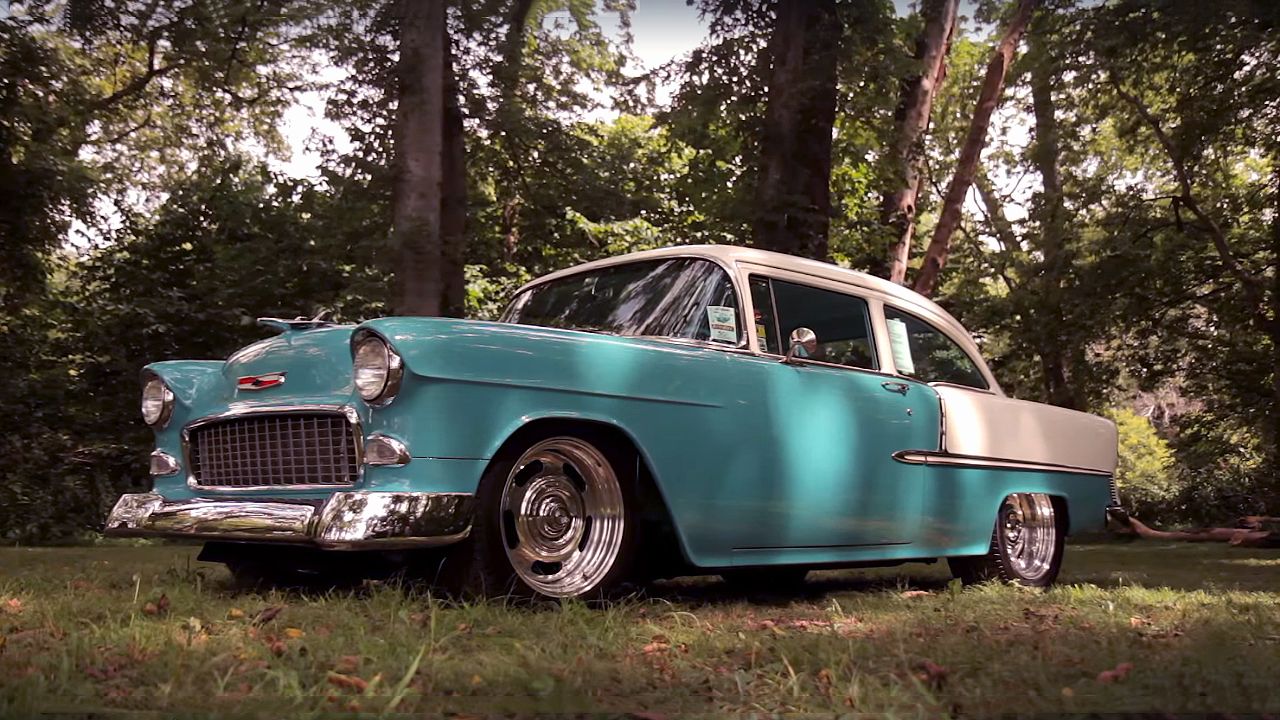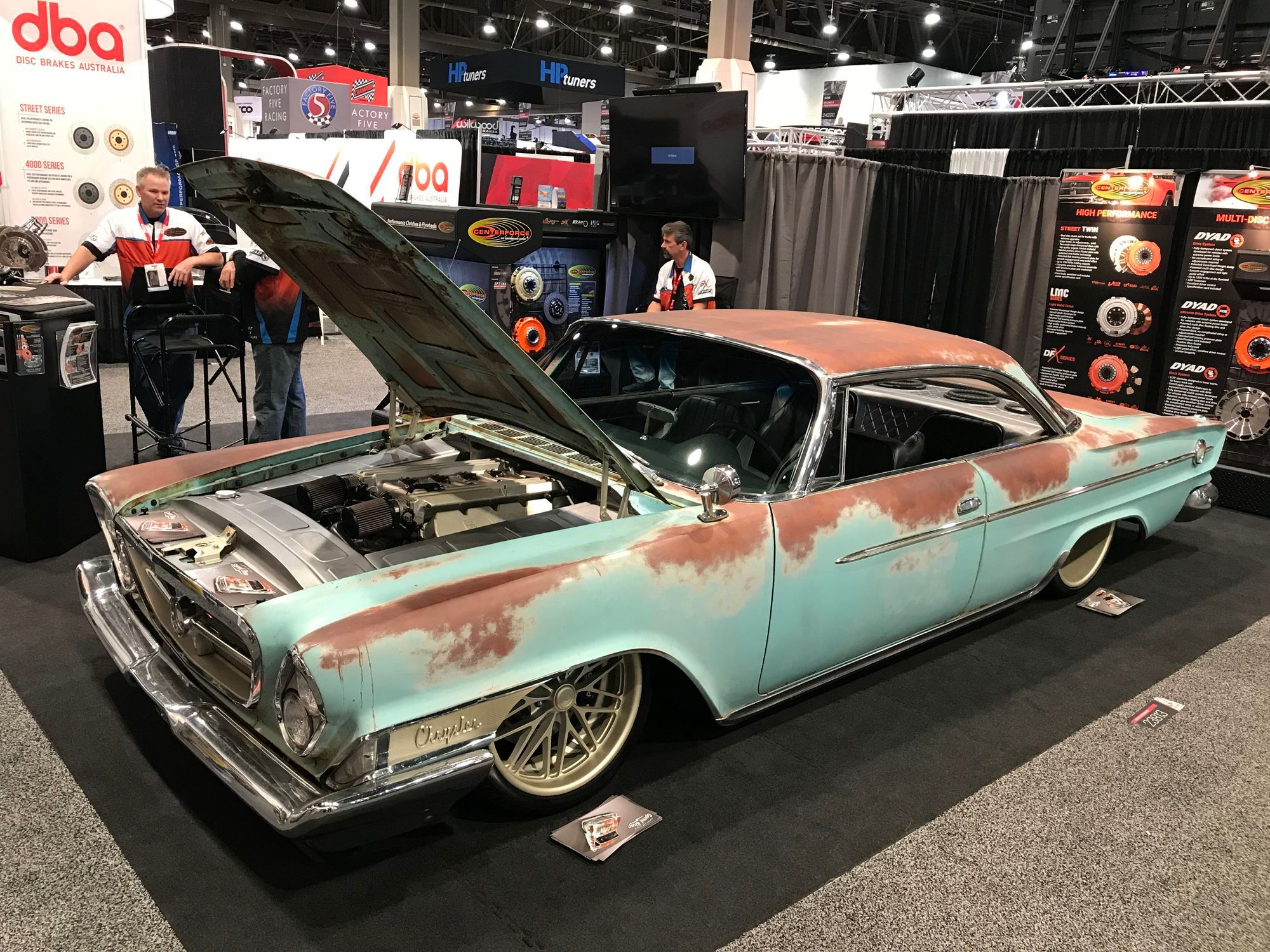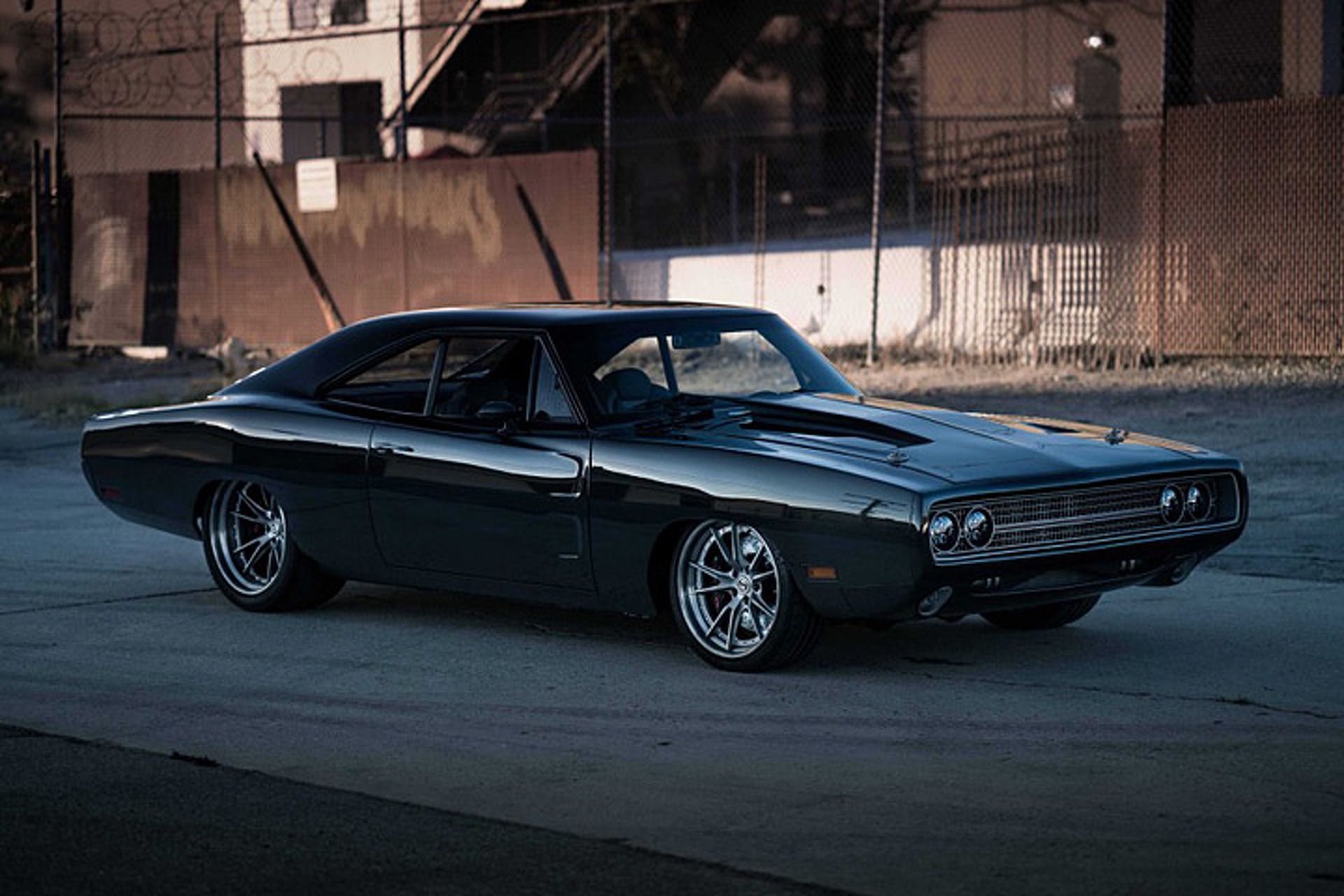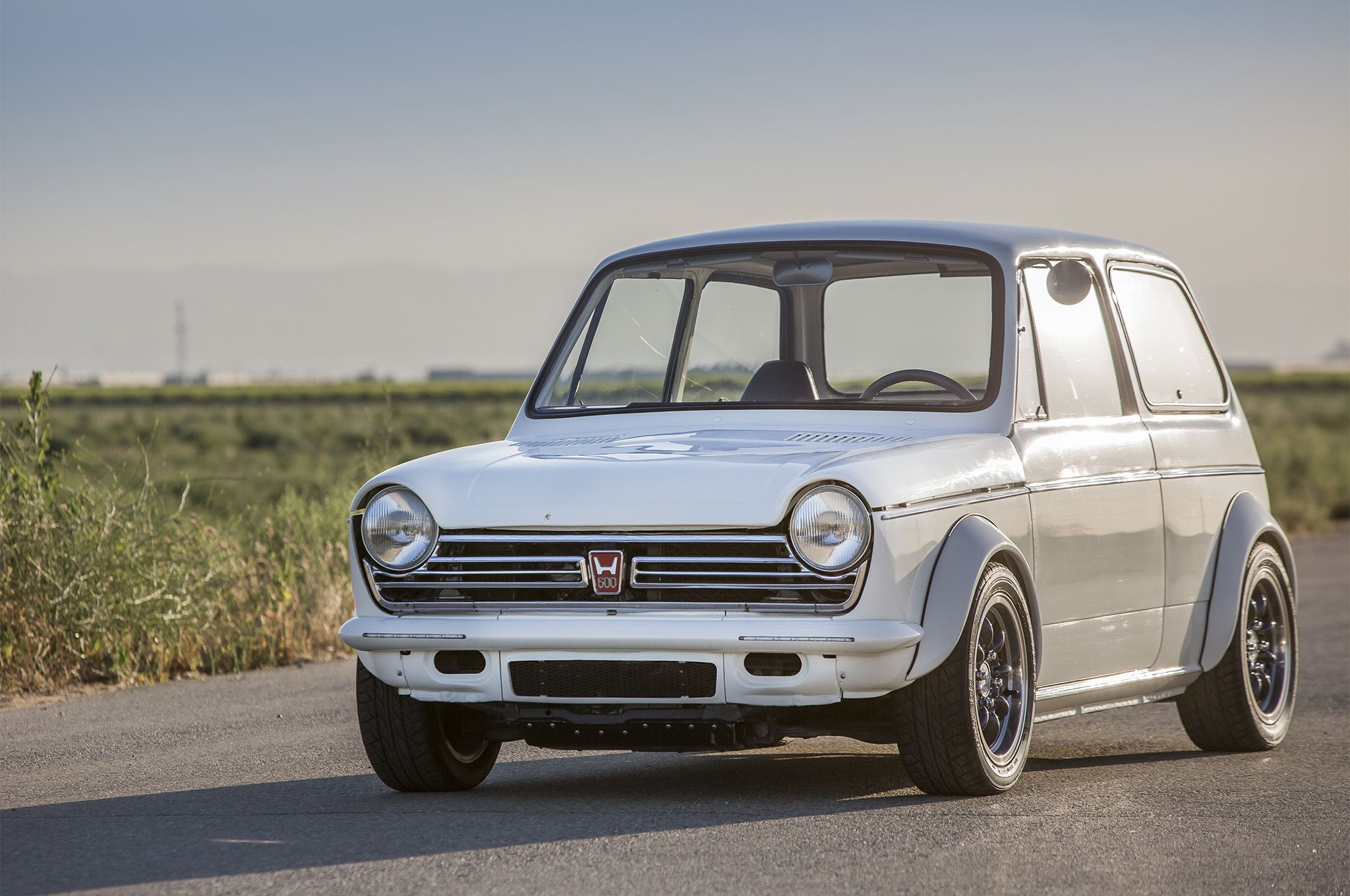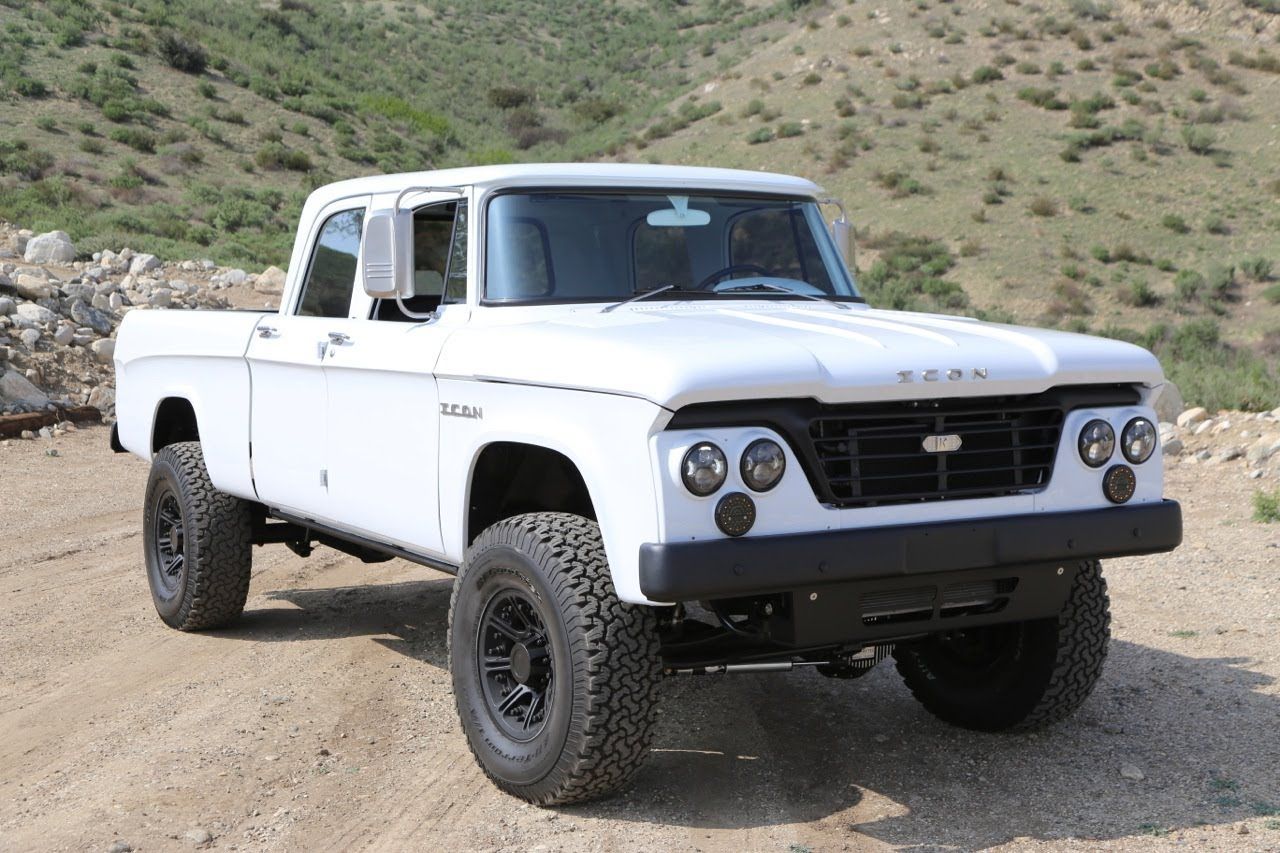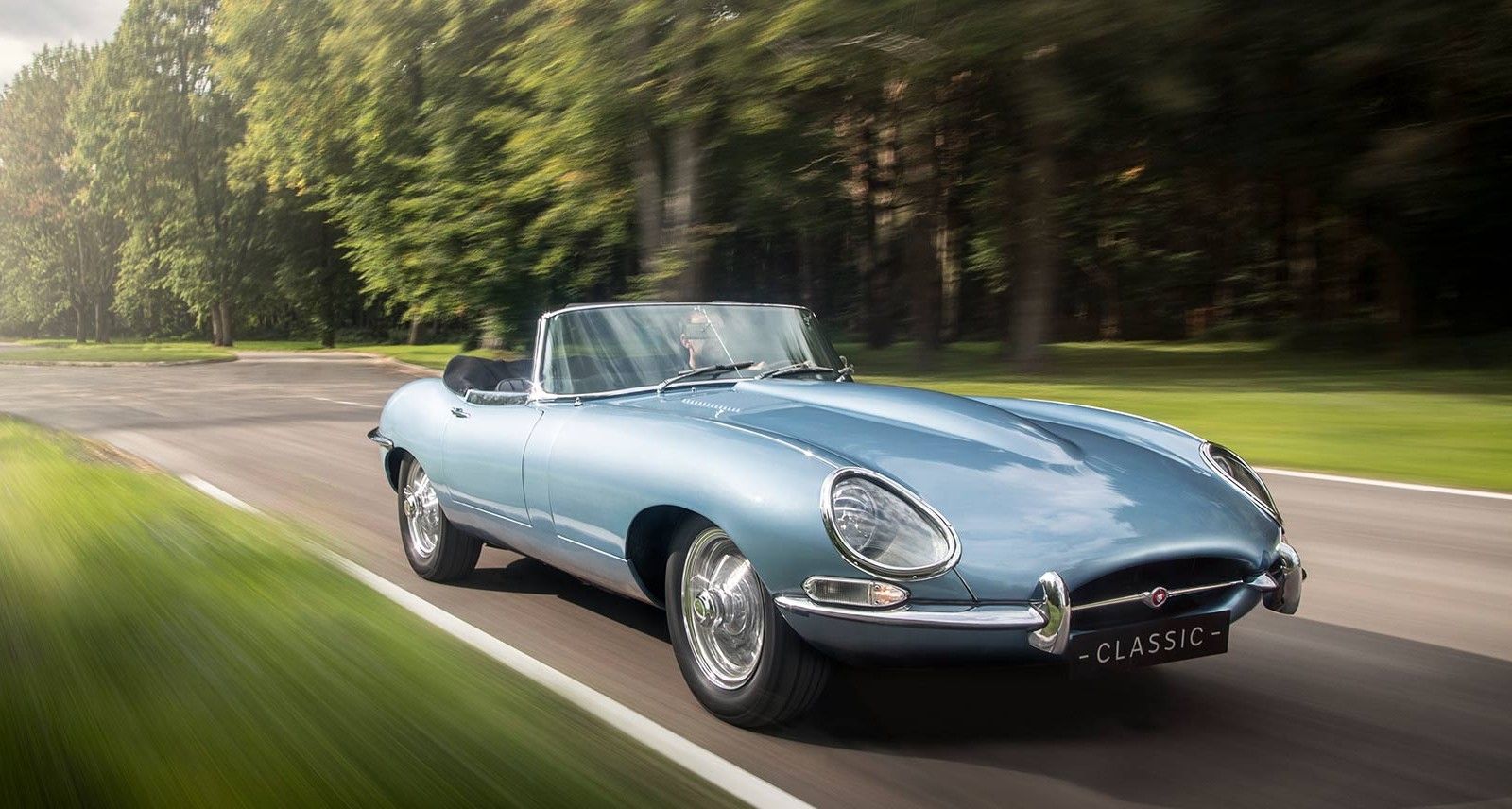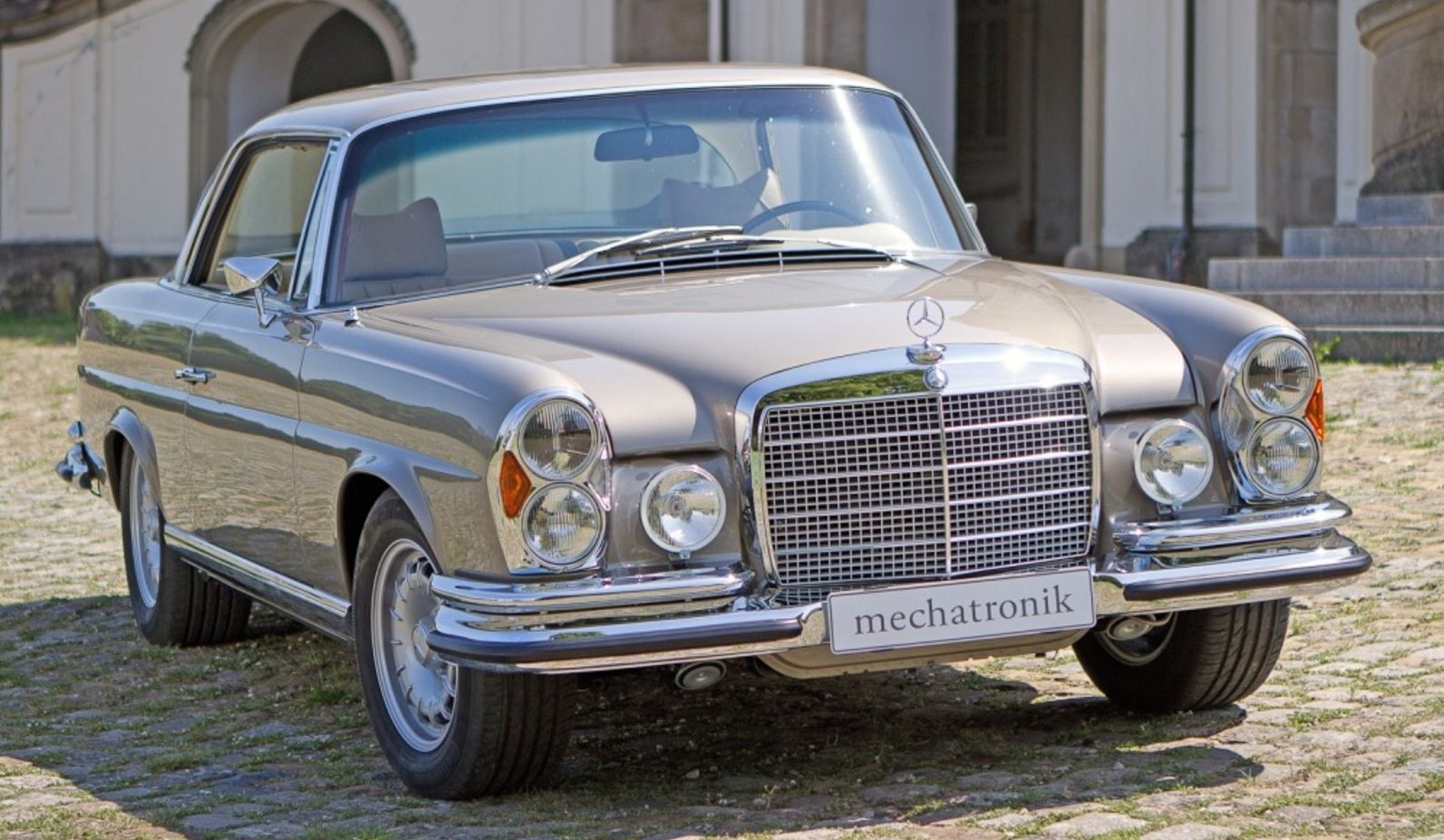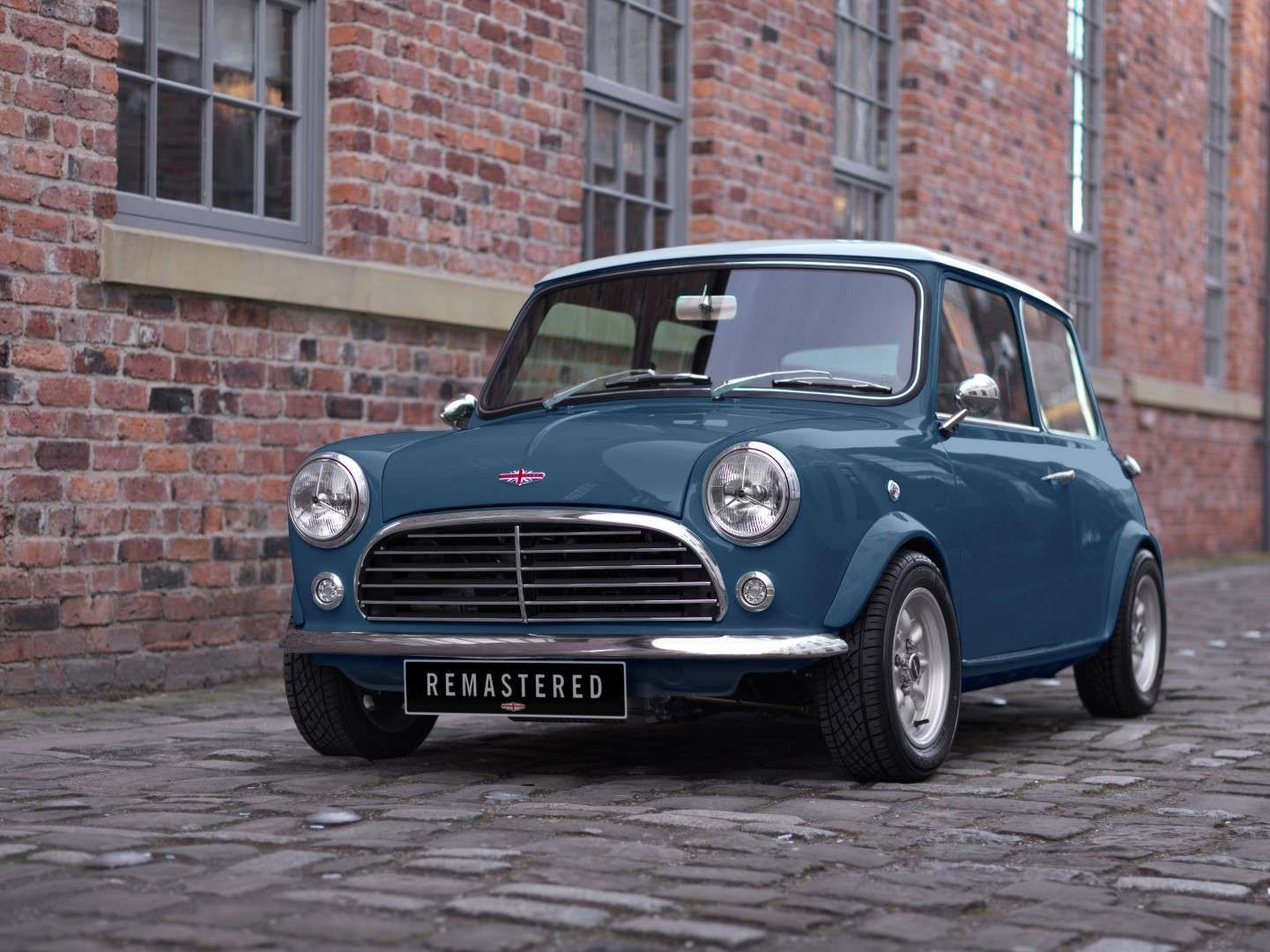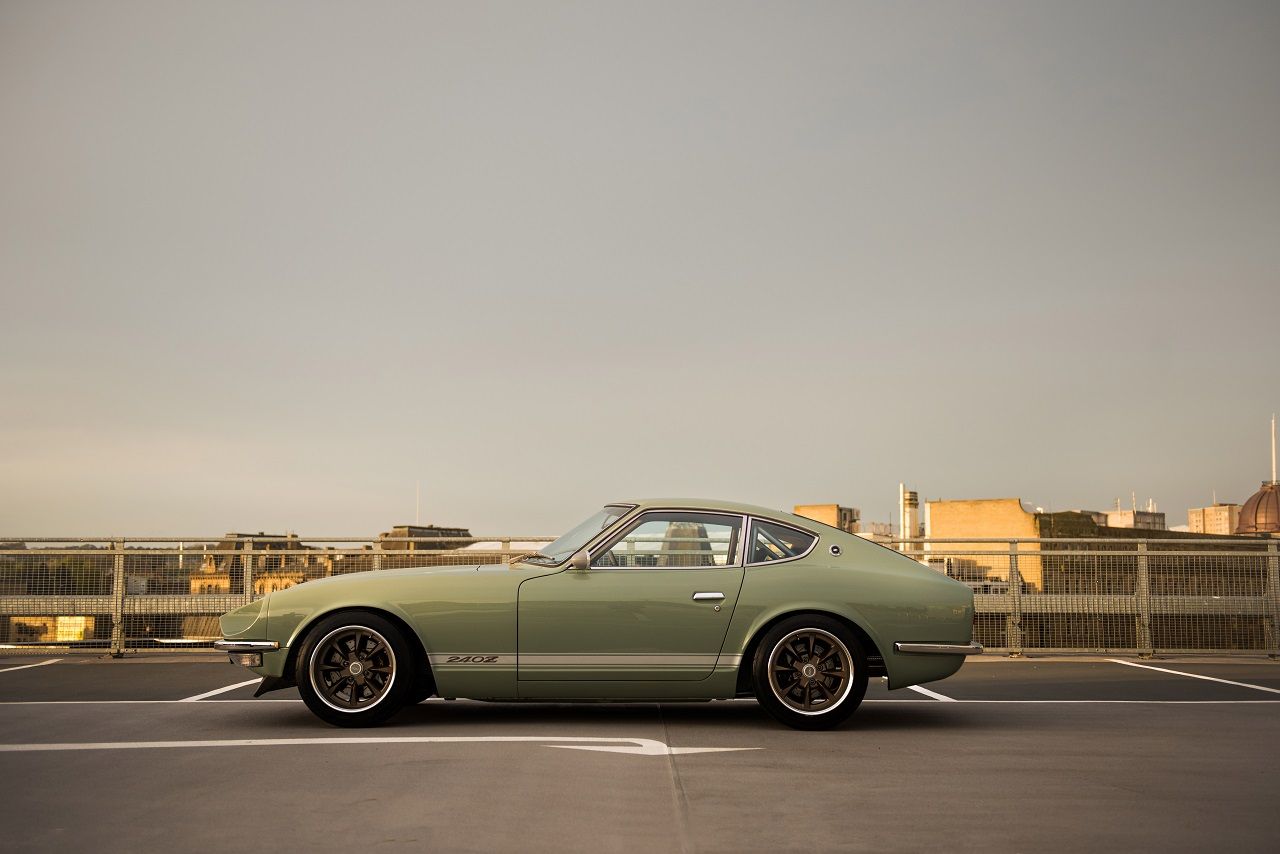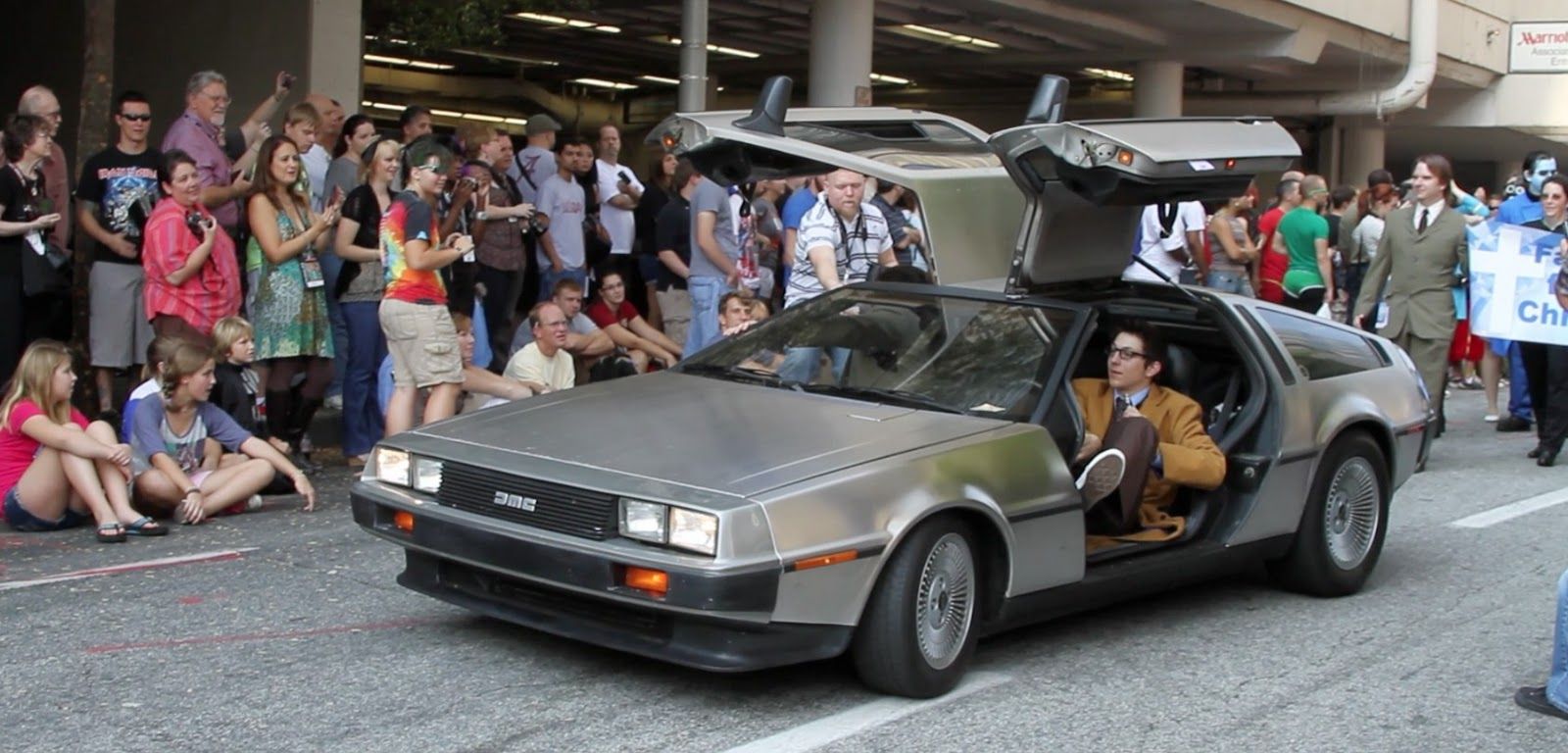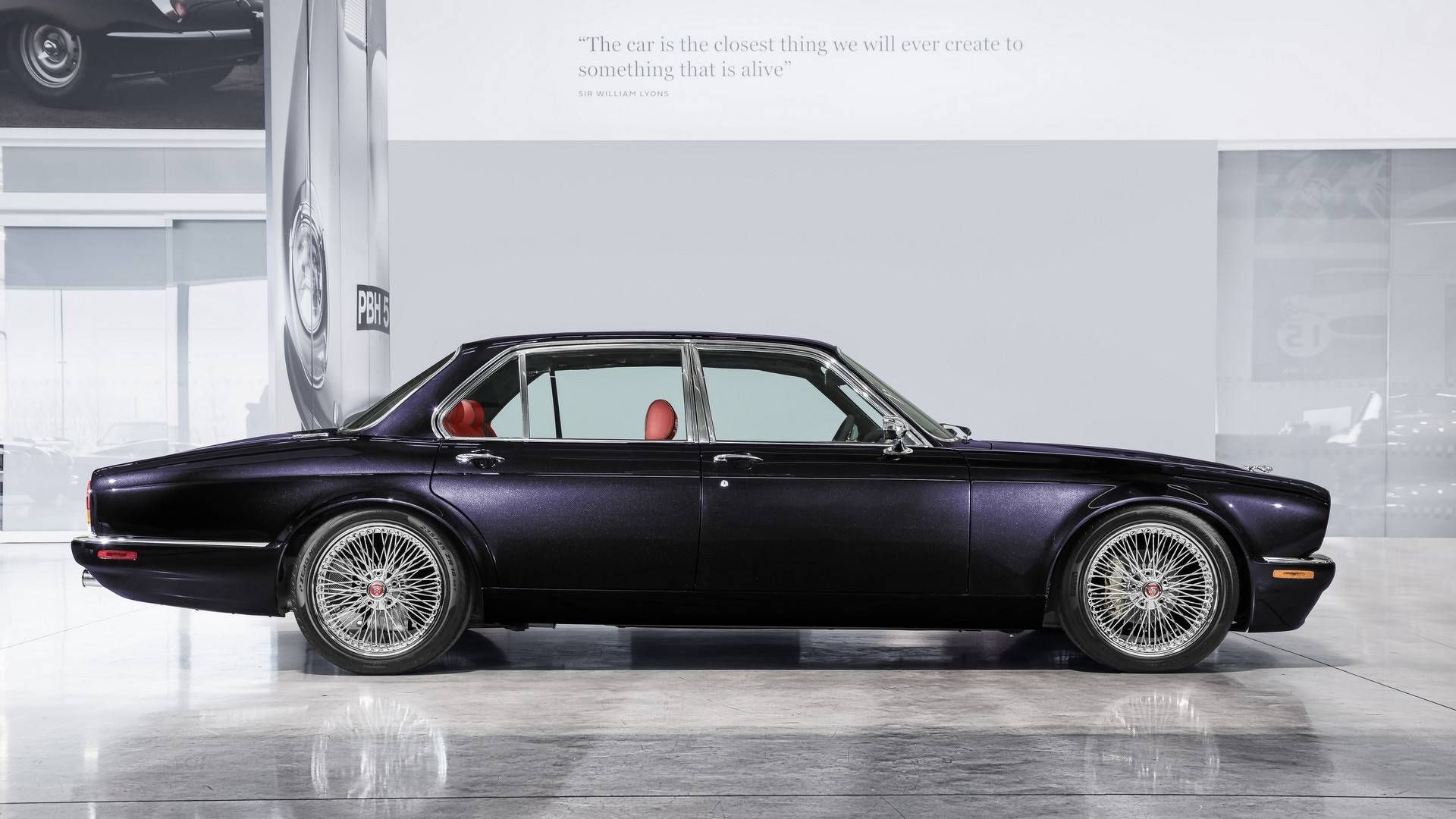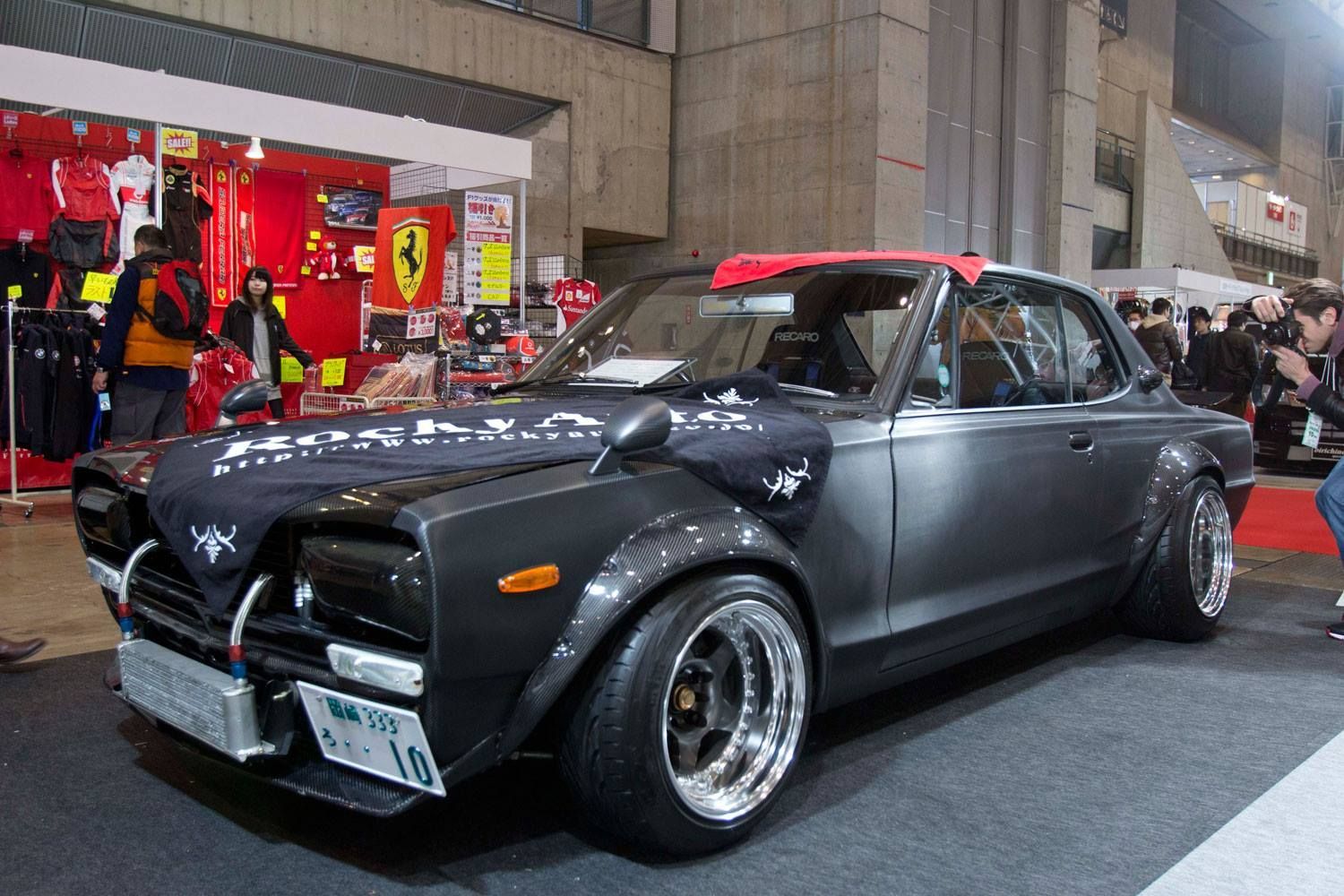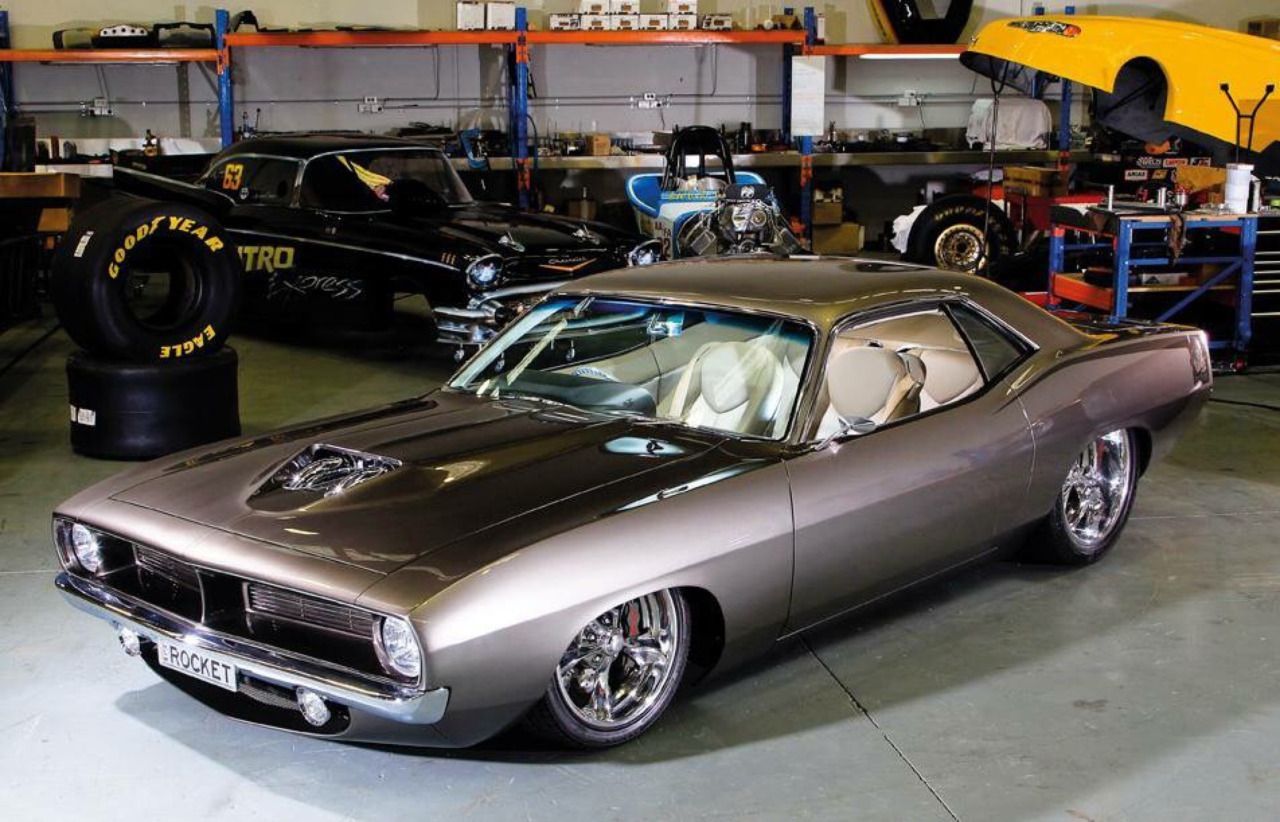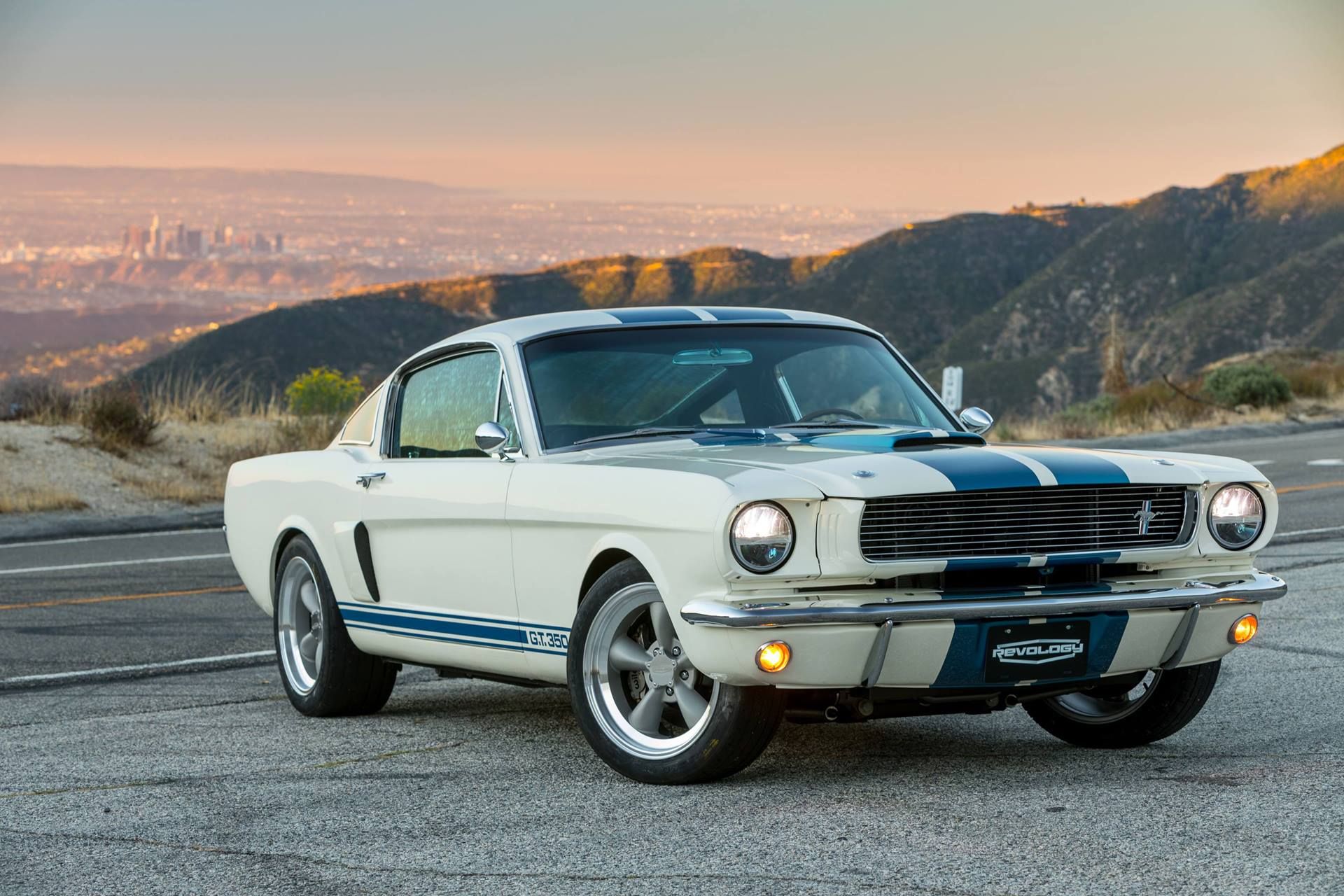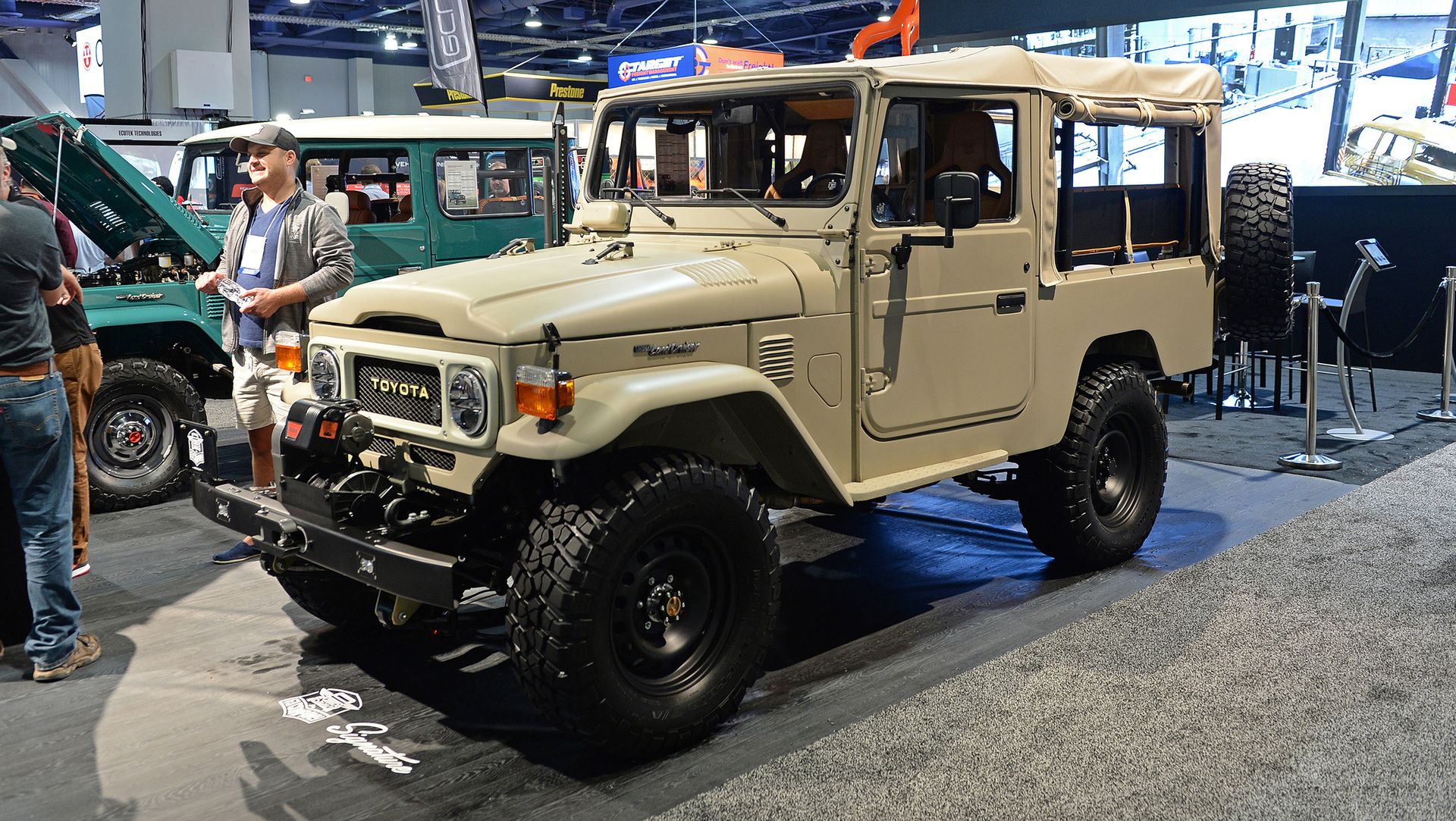Everybody likes the idea of owning a classic car, right up until they actually have to contend with the reality of owning a classic car. Compared to what modern consumers expect, most vehicles manufactured prior to the 1980s are severely lacking in terms of comfort, reliability, driveability, and safety. That’s where restomods come in, mating vintage aesthetics to mechanical underpinnings that offer 21st century levels of plushness and performance, and won’t turn you into hamburger meat in the event of an accident. The genre has exploded in popularity over the past couple of years, with companies like ICON and Singer offering a range of high-dollar, built-to-order models that have garnered massive attention from mainstream automotive media.
While it's tricky to pin down the main driving force behind this genre-specific boom, I’d like to think that its related to the growing rift between the increasingly homogenized world of new high-performance cars and a society-wide craving to stand out. Viewed through that lens, it makes sense for minted buyers to look for a vehicle that harkens back to a less heavily-regulated era, back when cars of different marques looked and drove in ways that were fundamentally different from one another. So, what’s the rub? Well, if you’ve been paying attention to my choice of words, you’ll notice that I’ve never said “cheap”. The majority of the entries on the following list are priced well into six-figure territory. Of course, genuine artistry isn’t something you can find at Sammy’s Discount Motors, either…
20 Alfaholics GTA R 290
Don’t be fooled by the GTA R’s restoration-esque appearance: UK-based Alfa Romeo specialist Alfaholics left no stone unturned in transforming a late sixties Alfa Romeo GT into a thoroughly modern performance car. That detail-oriented approach extends to the car’s very foundation, as the GTA R is built around a seam-welded steel monocoque cloaked in carbon fiber body panels, keeping curb weight down to a feather-like 1,830 lbs (roughly 100 lbs lighter than the original car).
Under the hood is a 240 hp 2.3 liter Alfa Romeo Twin Spark inline-four.
The suspension comprises titanium wishbones up front and double adjustable aluminum gas shock absorbers at all four corners, with stopping duties handled via a Superleggera billet aluminum big brake kit. The controls for all of this cutting-edge componentry are ensconced within a gorgeously appointed interior, featuring leather-wrapped Recaros, a 12-point roll cage, Wilton Wool carpets, and Dynamat sound and heat insulation. The asking price for this masterpiece? Around $250,000.
19 Clarion's 1974 BMW 2002
Compared to other cars on this list, Clarion’s 1974 BMW 2002 is a paragon of restraint. If you’re looking for a stripped-out cockpit, a fire-breathing engine with gumball slick tires and ridiculous aerodynamic paraphernalia, you won’t find it here. Under the hood lies a completely rebuilt M10 inline-four, fortified with a ported cylinder head, high-compression pistons, Weber DCOE 40 side-draught carburetors, and a custom fabricated header and stainless-steel exhaust. Output is a modest 140 hp and 150 lb ft of torque, more than adequate for a car that weighs just 2,300 lbs. The 2002’s running gear didn’t escape Clarion’s attention either, with a full Koni suspension setup and re-drilled BBS RS mesh wheels wrapped in Toyo rubber. Of course, Clarion’s real expertise lies in the realm of in-car audio, so it should come as no surprise that this one-of-a-kind Bimmer features a trunk-mounted six-channel amplifier and dual subwoofers, controlled via a touchscreen infotainment system mounted in the center console.
18 Gary Kollofski’s 1955 Chevrolet Bel Air V12
The Bel Air is a common fixture at car shows around the country, usually sporting immaculate paint and a 350 V8 under the hood. At first glance, this 1955 tri-five doesn’t seem to be any different, what with the masses of chrome and two-tone pastel color scheme. Open the hood however, and you’ll realize that this is no garden-variety, Hawaiian-shirt-esque classic.
Owner Gary Kollofski somehow managed to wedge a 730 ci (that’s 12.0 liters for all you metric folk) Hemi V12 into the Bel Air’s snout.
That absolutely massive unit, fed via a trio of Holley 600 CFM carburetors, comes courtesy of Italian speedboat engine builder BPM and kicks out 620 hp and 720 lb ft of torque. Added show car flair comes courtesy of a fully retrimmed interior, accessed via a pair of reverse-hinged doors.
17 Classic Car Studio’s 1962 Chrysler 300
Personally, I’ve never quite been a fan of the rat rod aesthetic. Part of that, no doubt, can be traced back to a small but vocal minority of delusional backward cap-wearing dudebros slapping the label onto a poorly-built trash heap to disguise their lack of effort or mechanical know-how. This thoroughly patina-covered Chrysler 300, built by St. Louis-based Classic Car Studio, might just change my mind. Rather than a refurbished version of its original 440 ci V8, this low-slung cruiser is powered by an 8.0-liter V-10 (sourced from a Gen II Dodge Viper) hooked up to a chunky Tremec T56 transmission. That ground-scraping stance, meanwhile, comes courtesy of a RideTech Air Ride suspension, the height of which can be changed via a toggle inside an almost completely custom interior.
16 1970 Dodge Charger “Tantrum”
Speedhunters’s Mike Garrett called Tantrum, and I quote, “one of the most impressive cars we’ve ever had the privilege of featuring on these pages”. Remember, this is a guy who is paid to write about the world’s finest modified automobiles (what a life!) When someone in that position writes something of that magnitude, you’d best sit up and pay attention. Built by Port Washington, Wisconsin-based outfit SpeedKore Performance in 2015, Tantrum is at the bleeding edge of aftermarket performance.
The majority of the body, for instance, is made of pre-preg carbon fiber, with added detailing coming in the form of hand-shaped aluminum.
That composite shell disguises a chassis designed in-house, and features a four-link rear suspension as well as a reinforced Roadster Shop front clip. That reinforcement is needed to cope with the undisputed star of the build: a 9.0-liter OHV V8 from Mercury Marine, capable of incinerating even the fattest of tires thanks to its 1,650 hp output.
15 VFR800 Interceptor-Powered Honda N600
The N600 was a subcompact hatchback that also happened to be the first car that Honda ever sold on our shores. Though it was nippier than its 45 hp power output would have you believe, thanks to a curb weight of 1,100 lbs, a 0-60 MPH time of 19 seconds was never going to light your hair aflame. If you’re in love with the N600’s adorable styling but find yourself wanting a bit more pep, you might find this build to your liking: not only is this 1972 N600 powered by a 0.8 liter V4 engine from a 1997 Honda VFR800 motorcycle, rated at 104 hp and capable of revving to 12,000 RPM, it’s also been converted to rear-drive and features an all-round independent suspension setup along with a sequential gearbox.
14 1965 ICON Dodge D200 "Reformer"
ICON 4X4 is world-renowned in the high-end restoration business, distinct from their peers thanks to their peerless eye for detail. Based out of Chatsworth, California, founder Jonathan Ward and his crew have put together a substantial portfolio of meticulously re-engineered off-roaders and classics. This heavily modified ex-US Airforce Dodge D200 crew-cab pickup, built over the course of two years as part of their “Reformer” series, is one of their most impressive projects.
Don’t be fooled by the old-school wrapper: peel back the meticulously finessed sheet metal and you’ll find thoroughly modern underpinnings sourced from a Dodge Ram 2500.
Running gear, meanwhile, is comprised of Kore off-road suspension with Fox Racing accessories and 37-inch Beadlock wheels. Under the hood is a Banks Performance-modified 5.9 liter Cummins Turbodiesel that pumps out 975 lb ft of torque. It’s the six-passenger cockpit that’s the real star of the show however: with architectural-grade glass, American bison leather upholstery, a hidden touchscreen infotainment system, and sun visors sourced from a Learjet, this is a no-expenses-spared exercise in pampering.
13 Jaguar E-Type Zero
The promise of electrification and autonomous driving casts a mighty long shadow over enthusiasts, and its hard not to see why: images of the future of motorized mobility are heavy on charmless, sexless pods, devoid of any of the personality that made people fall in love with the automobile in the first place. But, if ideas similar to Jaguar E-type Zero gain traction with other manufacturers, maybe there’s hope to be had for those of us who worship at the altar of four-wheeled fun. Unveiled as a concept in 2017, Jaguar recently announced that it would be putting an all-electric E-Type into production and begin selling conversion kits to existing E-Type owners. The Zero’s electric motor kicks out 295 hp and offers a reasonable 170 mile driving range. Purists will no doubt be satisfied to hear that the zero-emission powertrain slots into the car without any structural modifications, meaning that the conversion should be completely reversible.
12 Mechatronik 1970 Mercedes-Benz W111 M-Coupe
Based in the sleepy town of Pleidelsheim, Germany, Mechatronik is a shop that specializes in restoring Mercs of every vintage to concours-ready condition. This 1970 W111 model, however, is different.
Under the mostly original skin is a heavily modified chassis, meant to accommodate a naturally-aspirated 5.5 liter V8 from AMG’s Affalterbach factory.
That fire-breathing hand-built motor, plucked from the pointy nose of a Mercedes-AMG SLK 55, delivers its 360 horses to the rear axle through a seven-speed automatic transmission. Also fitted is a full suite of modern safety features (including upgraded ABS, traction control system, and three-point seatbelts), so you don’t wrap your $464,000 uber-coupe around a tree at the earliest opportunity.
11 David Brown Automotive Mini Remastered
David Brown Automotive aims to be the Singer of restomodded British classics, with the so-called Mini Remastered being their cornerstone. Nowhere is that ambition more evident than the quality of the paint. Starting with used Mini bodies (the company can’t use newly-manufactured shells due to some legal red tape) which are trimmed and de-seamed, DB Automotive then applies the paint over the course of four weeks, leaving an incredibly deep, mirror-like finish. The interior is given the same caliber of treatment, with full-grain, British-sourced leather upholstery, knurled aluminum controls, as well as a 7" touchscreen infotainment system with Bluetooth connectivity and Apple CarPlay and Android Auto compatibility. Power comes courtesy of a heavily upgraded version of the Mini’s original 1.3 liter inline-four, now delivering 78 hp to the front wheels through a heavily reinforced four-speed automatic. Pricing starts at $62,500, but the company expects most customers to spend closer to $90,000 thanks to the bevy of personalization options on offer.
10 MZR Roadsports Datsun 240Z Sport Design
When the 240Z careened onto the world stage in 1970, it sent shockwaves through the established sports car hierarchy. Not dissimilar to the R35 GT-R in 2007, it kicked the tar out of European rivals (or at least matched them in performance) that retailed for roughly twice as much. West Yorkshire, UK-based MZR RoadSports aims to pay homage to that illustrious heritage with the Sport Design, the company’s vision of what the ultimate 240Z should look and drive like.
The changes start with the chemically-stripped body and extend their way down to the very heart of the car.
Open the hood, and you’ll find a bored and stroked 3.1-liter fuel-injected L-Series straight-six, fitted with a trick 6-2 stainless steel exhaust manifold. Power comes in at 280 hp, sent the LSD-equipped rear axle through a five-speed gearbox. The interior is similarly well-finished, with Nappa leather upholstery, Bluetooth and iPhone-compatible infotainment, central locking, and a half-cage.
9 Nicholas Roedl’s 1981 DeLorean DMC-12
The LS family of V8s is probably one of the best things GM has ever built, with an almost peerless combination of potency, efficiency, and relative simplicity. The relative abundance of these motors, along with their compact size and plentiful aftermarket, also make it an ideal candidate for engine swaps, even in unusual applications like this 1981 DeLorean DMC-12. Frustrated with the car’s asthmatic 2.9 liter V6, owner Nicholas Roedl took it upon himself to replace it with a 5.7 liter LS1, sourced from a C5 Corvette. Not satisfied with the near three-fold increase in horsepower, he then fitted Jegs high-flow mufflers, more aggressive heads, and a Lingefelter camshaft. The finished product delivers a dyno-verified 425 hp to the rear wheels. Roedl’s DeLorean also sports almost completely restored stainless steel body panels.
8 1984 Jaguar XJ6 “Greatest Hits”
Commissioned by Iron Maiden drummer Nicko McBrain, this 1984 Series III XJ6 has undergone a cumulative total of 3,500 man-hours under the knife of Jaguar Land Rover’s Classic Works division, with close to 4,000 parts either refinished or replaced. Exterior changes are minor but hugely alter the car’s vibe, with deep mauve metallic paint, extra chrome trim, bullet-style side mirrors, LED halo running lights, recessed fuel filler caps on either side of the trunk, and subtly flared wheel arches, meant to accommodate 18-inch wire wheels wrapped in 235-width Pirelli P Zero rubber. Mechanical changes are comparatively subtle, with thrust being delivered via a rebuilt 4.2 liter straight-six. That vibrantly-hued interior, meanwhile, is mostly trimmed in Pimento Red leather, enlivened with black Alcantara headlining, stained Sycamore wood veneer, and touchscreen infotainment system.
7 Rocky Auto’s Nissan Skyline GT-R
If you live anywhere within 50 miles of Purist-land, I’m pretty sure this entry is going to disgust you. The Hakosuka, or “Box Skyline”, is one of Nissan’s most iconic models: after all, its the car that started the GT-R dynasty, confirming that Japan’s auto industry was capable of going toe-to-toe with the world’s best. Seeing one modified in any way (except for a factory-fresh restoration) seems tantamount to sacrilege.
In spite of that stigma, the absolute madmen over at Japan’s Rocky Auto did the unthinkable.
The in-yer-face modification started with a carbon-look vinyl wrap, intended to complement the weave in the genuine composite used for the front fascia, headlight covers, Works-style fender flares, fender-mounted side mirrors, and hood. Wheels are 15” Work Meister CR01s wrapped in Pirelli rubber, with ground-hugging ride height achieved via a set of adjustable Rocky Auto coilovers. The heart of the build is a naturally-aspirated Autech RB26, used in the limited edition Autech R32 Skyline, complete with a fractional (1 mm) increase in bore, polished heads, and re-balanced internals.
6 1970 Plymouth Barracuda “King Kong”
King Kong is probably the most recognizable modified muscle cars to have come out of Australia since Max Rockatansky’s Ford Falcon XB, having won dozens of awards at shows around the continent. That fame is well deserved: Graeme Cowin, owner of online Ozzie parts catalog Rocket Industries, bought the car in 2005 and painstakingly upgraded to the point you see here over the course of five long years, with most of the heavy lifting being done by Fast Lane Speed Shop (based out of the bafflingly-named city of Canadian, Australia). Hand-shaped body panels, bespoke chassis, a custom dashboard and center console: the fabrication work on display here is simply staggering, all of it made from lovingly finessed metal, with nary a single piece of fiberglass being used. Under the hood lies a 528 ci Hemi fitted with Hogan Twin Plenum EFI and Ram Tubes, good for a stout 700 hp.
5 1974 Plymouth Road Runner “Skunk Works”
In case you didn’t know, the 1970s weren’t exactly the muscle car’s golden years. Not only were gas and insurance prices shooting off into the stratosphere, regulators clamped down on tailpipe emissions to alleviate the smog choking urban residents, forcing manufacturers to introduce primitive, extremely restrictive control devices.
The result was a whole generation of heavily neutered performance cars: bloated, sluggish parodies of their former selves that would struggle to outrun a compact car from a decade earlier.
That sordid reputation makes this 1974 Plymouth Road Runner seem like an unusual choice for a six-figure rebuild. That didn’t stop California-based Lucky 7 Speed Shop from installing a fuel-injected 426 ci Hemi, accessorized with a pair of 62mm Turbonetics turbos, under its hood. Its 1,300 horses are sent to rear wheels (upsized Mopar Rallyes, in case you’re wondering) wrapped in sticky Nitto Invos rubber.
4 Singer DLS
Singer is basically the LeBron James of restomod companies, having managed to garner a following not only among Porsche diehards, but enthusiasts of practically every marque and scene: their commitment to build quality is the stuff of legend, eclipsing the efforts of even the most prestigious of OEMs. The DLS (Dynamics and Lightweighting Study) pushes that ethos to its peak. Co-developed with Williams Advanced Engineering, the DLS lives up to its name with the liberal application of carbon fiber: all of the body panels and most of the cockpit are made of the stuff. It hits the scales with a dry weight of just 2,180 lbs, almost 800 lbs lighter than the Porsche 964 on which it is based. It also boasts a motor that deserves to be put on display at the Louvre: Singer and Williams worked with Porsche motorsport icon Hans Mezger to develop the naturally-aspirated 4.0 liter flat-six, fitted with exotic features such as Formula 1-inspired upper and lower fuel injectors and titanium valves. Horsepower comes in at an even 500, reached at the giddy heights of 9,000 RPM. All of this, and more, can be yours for a mere $1.8 million.
3 Revology 1966 Shelby GT350
Revology Cars was founded by former Ford employee Tom Scarpello, who restored his first Mustang in 1982 and ran the automaker’s high-performance Special Vehicle Team for six years.
Who better to head up a company that specializes in building high-performance Fords?
Their GT350 model, officially licensed by Shelby Automotive, is a perfect melding of old and new. Peel back the brand-new steel panels (fitted by hand), and you’ll a Detroit Speed Alumaframe front suspension and three-link rear, slotted and vented brakes, a 5.0 liter Coyote V8 (rated at 460 hp), and a full Nappa leather interior equipped with three-point seatbelts and German wool carpets.
2 Ringbrothers 1966 Chevrolet Chevelle “Recoil”
Recoil is probably the most heavily-modified first-generation Chevrolet Chevelle on Earth, boasting a spec sheet that would make even the most jaded of forum dwellers salivate. Built by world-renowned speed shop Ringbrothers, headquartered in Spring Green, Wisconsin, Recoil rolls on a bespoke chassis and suspension from Roadster Shop, with a front independent setup from a C5 Corvette and a four-link rear. Those fancy five-spoke wheels, designed in part with HRE, are unique to the car, and are wrapped in staggered-width Michelin Pilot Super Sport rubber (275-width up front and a colossal 345-width at the rear). Power comes courtesy of a Wegner Motorsports LS7 fitted with a Whipple twin-screw supercharger, capable of delivering 980 hp to the nine-inch Ford rear end through a Tremec six-speed. The stripped-out interior was fabricated almost entirely from hand-shaped sheet metal, with a Racepak digital gauge cluster, skeletonized racing seats, and five-point harnesses only adding to the hardcore vibe.
1 The FJ Company Signature
Despite making use of a 1970s-spec FJ43 ladder chassis, this meticulously presented restomod has more than a few 21st-century tricks hiding up its sleeve. Chief among them is a Toyota 1GR-FE V6 fitted with a Haltech electronic fuel injection system.
Added livability comes courtesy of a factory-fresh six-speed transmission, power steering, and a lux-ified cockpit, fitted with leather-wrapped Recaro Sportster CS perches, a heater and air-conditioning, and a center console-mounted iPad Mini.
Don’t think the added plushness has compromised the FJ43’s off-road chops either. That particular repertoire has only been expanded with the addition of bespoke floating axles front and rear, Fox Racing shocks and 285-width BF Goodrich A/T tires.
Sources: autoweek.com, speedhunters.com, thedrive.com, roadandtrack.com, caranddriver.com

